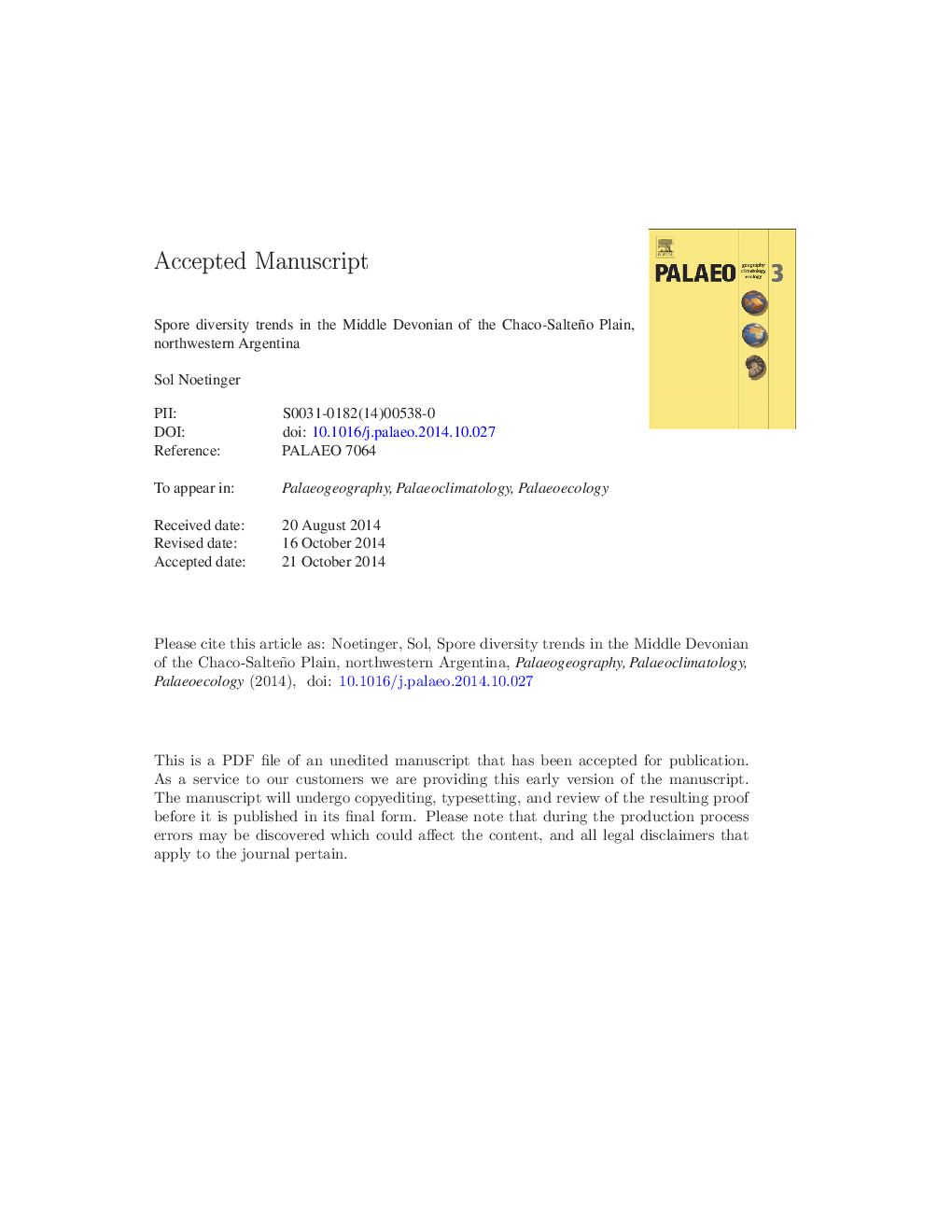| Article ID | Journal | Published Year | Pages | File Type |
|---|---|---|---|---|
| 6349855 | Palaeogeography, Palaeoclimatology, Palaeoecology | 2015 | 45 Pages |
Abstract
Devonian deposits in northwestern Argentina were historically studied with stratigraphical purposes, since these layers conform the source rocks of the producing basins of the region. A fairly well preserved palynomorph assemblage, from the Tonono Formation, provides an opportunity to perform the first quantitative analysis to study the evolution of diversity in the succession. Two associations are here defined by both, stratigraphic distribution of species and cluster analysis, ranging from the lower Eifelian to the lower Givetian. Rarefaction analysis reveals the existence of a relatively rich miospore population. Species richness increases while there is a drop in diversity and evenness towards the top of the column. The increment of the marine components towards the latter section indicates shifts in the shoreline. The influx of warmer water into higher latitudes, as highlighted by the arrival of the brachiopod Tropidoleptus, could have favored the inception of new spore species in the settled community. These results add to evidence that some groups build up the number of species in disturbed settings, and evenness is reduced with each new species introduced.
Related Topics
Physical Sciences and Engineering
Earth and Planetary Sciences
Earth-Surface Processes
Authors
Sol Noetinger,
